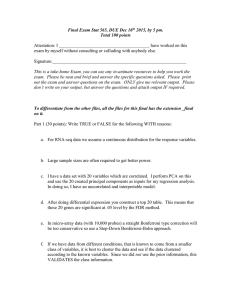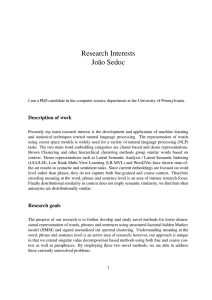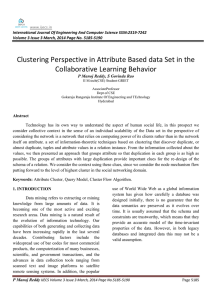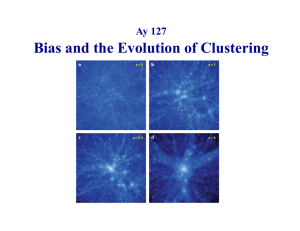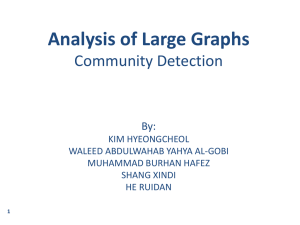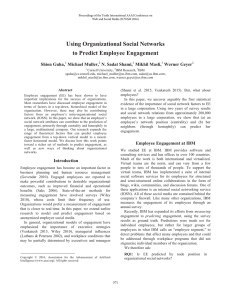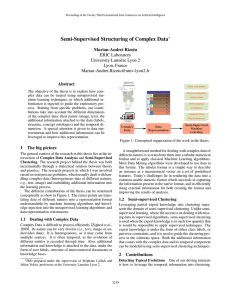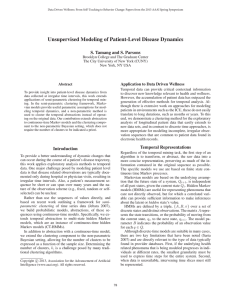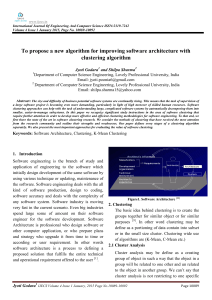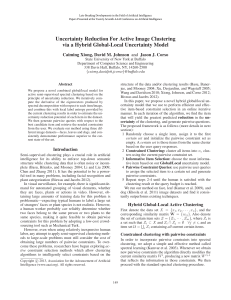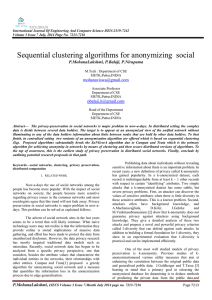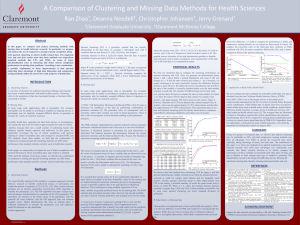ECON 483 - PRACTICE QUESTIONS
advertisement
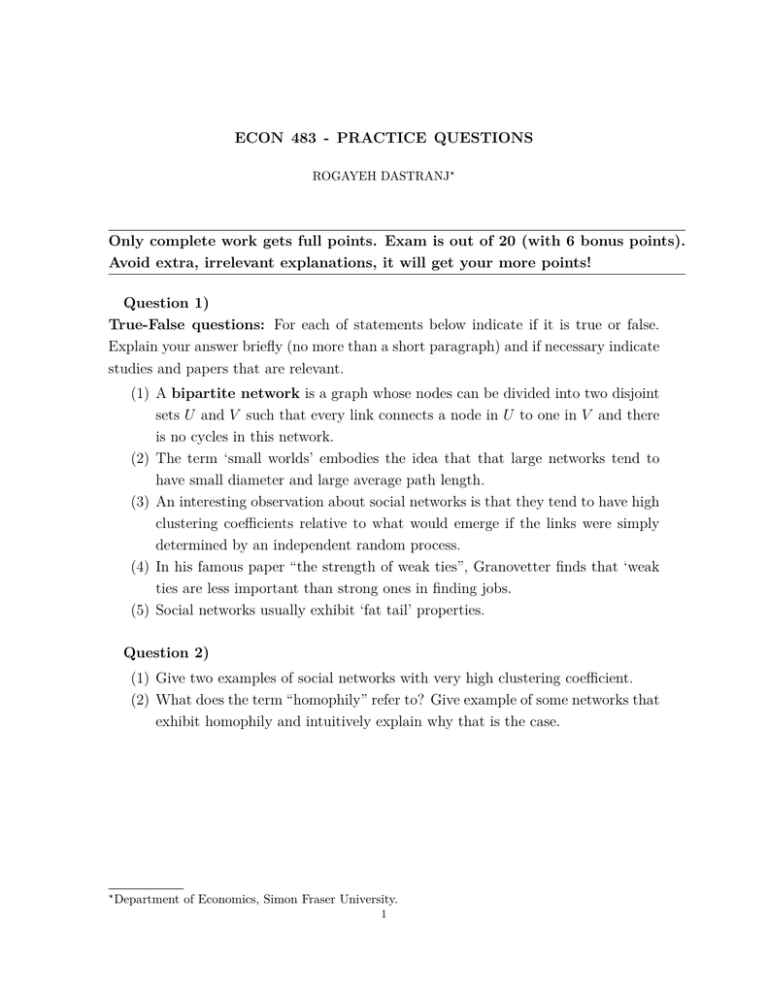
ECON 483 - PRACTICE QUESTIONS ROGAYEH DASTRANJ? Only complete work gets full points. Exam is out of 20 (with 6 bonus points). Avoid extra, irrelevant explanations, it will get your more points! Question 1) True-False questions: For each of statements below indicate if it is true or false. Explain your answer briefly (no more than a short paragraph) and if necessary indicate studies and papers that are relevant. (1) A bipartite network is a graph whose nodes can be divided into two disjoint sets U and V such that every link connects a node in U to one in V and there is no cycles in this network. (2) The term ‘small worlds’ embodies the idea that that large networks tend to have small diameter and large average path length. (3) An interesting observation about social networks is that they tend to have high clustering coefficients relative to what would emerge if the links were simply determined by an independent random process. (4) In his famous paper “the strength of weak ties”, Granovetter finds that ‘weak ties are less important than strong ones in finding jobs. (5) Social networks usually exhibit ‘fat tail’ properties. Question 2) (1) Give two examples of social networks with very high clustering coefficient. (2) What does the term “homophily” refer to? Give example of some networks that exhibit homophily and intuitively explain why that is the case. ? Department of Economics, Simon Fraser University. 1 ECON 483 - PRACTICE QUESTIONS 2 Question 3) How many walks of lengths 2 and 3 exist in the networks below?! (hint: write down the network matrix and calculate the l power of the matrix) Question 4) How many components are there in this network? Question 5) What is the overall clustering and average clustering of the following network? ECON 483 - PRACTICE QUESTIONS 3 Question 6) What is the degree, closeness and betweenness centrality of each node in the following network? Question 7*) Argue the following: A connected network is a tree if and only if it has n − 1 links. In a tree, there is a unique path between any two nodes.







